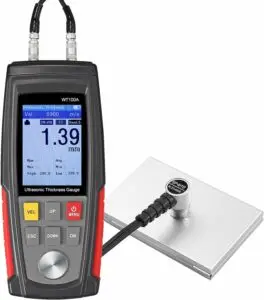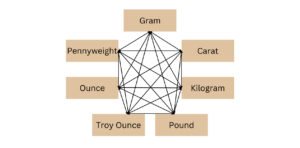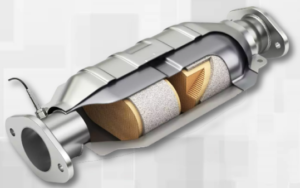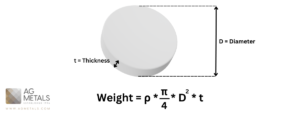Celerity – Speed of Sound
Celerity is an essential parameter in the mining industry, where it is used to determine the quality and characteristics of rocks, minerals, and ores. The speed of sound can help geologists and mining engineers identify the presence of valuable minerals and ores by analyzing the changes in the celerity of sound waves as they travel through different geological materials.
Generating a sound wave through precious metals
Generating a sound that can pass through a precious metal like gold involves the use of an ultrasonic transducer. An ultrasonic transducer is a device that converts electrical energy into high-frequency sound waves that can be transmitted through a material.
To generate a sound that passes through gold, the ultrasonic transducer is placed in contact with the surface of the gold sample, and a high-frequency electrical signal is applied to it. The transducer then converts this signal into high-frequency sound waves that penetrate the gold sample.
As the sound waves pass through the gold, they interact with the material, and some of the sound energy is reflected back to the transducer. The reflected sound waves are detected and used to generate a signal that can be analyzed to determine the quality and properties of the gold sample.
It is important to note that generating a sound that passes through a precious metal like gold requires specialized equipment and expertise. Ultrasonic testing of precious metals is typically performed by trained technicians using specialized equipment and procedures to ensure accurate and reliable results. Additionally, the size and shape of the gold sample may also impact the quality of the sound wave that is generated and transmitted through the material.
Ultrasonic test of gold
In ultrasonic testing of gold, celerity is used as a key parameter to determine the quality and purity of the gold sample being tested. Ultrasonic testing involves the use of high-frequency sound waves that are transmitted through the gold sample, and the speed of sound through the sample is measured.
Since the speed of sound through a substance depends on the density and elastic properties of the material, any variations in the celerity of sound waves as they travel through the gold sample can indicate the presence of defects, impurities, or other types of irregularities in the material.
For instance, if the speed of sound through the gold sample is lower than the expected value, it may indicate the presence of cracks, voids, or other types of defects. Similarly, if the speed of sound is higher than expected, it may suggest the presence of impurities or alloying elements that alter the density or elastic properties of the gold sample.
By analyzing the variations in celerity, ultrasonic testing can provide valuable information about the quality and purity of gold samples, which is critical in the precious metals industry. This information can be used to ensure that gold meets the required quality standards and to detect any potential issues before they affect the value or performance of the final product.
NOTE: An easy test with ultrasonic Ultrasonic thickness gauge can help to detect fake fgold bar that has Tungsten core










